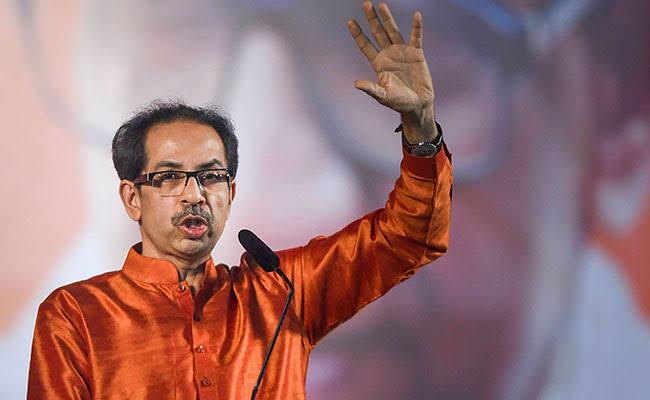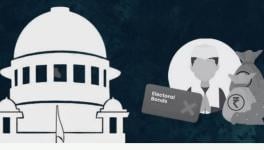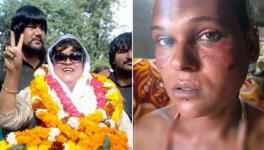Why Uddhav Thackeray Must Chart Sena Course Based on Inclusivity

In 2014, when the Bharatiya Janata Party (BJP) emerged as the single-largest party in the Maharashtra Legislative Assembly election, BJP supporters coined a catchy slogan, “Desh me Narendra, pradesh me Devendra—Narendra Modi as Prime Minister, Devendra Fadnavis as Chief Minister.” The saying gave the plan to have Fadnavis as chief minister of Maharashtra a fillip and momentum. On 12 July 2020, while campaigning for the next Maharashtra Assembly election, Modi himself proposed “Narendra in Delhi and Devendra in Mumbai” and projected it would boost development in Maharashtra.
Devendra After Narendra
In June, some ardent supporters sensed Fadnavis would become chief minister again. In their enthusiasm over Shiv Sena MLAs crossing over to the BJP, they coined another slogan, “Devendra After Narendra.” The ambition thinly concealed in the one-liner is said to have enraged the BJP’s top leadership in Delhi, and the outcome reflects in Fadnavis becoming Deputy Chief Minister while Shiv Sena rebel Eknath Shinde was selected for the lead role in Maharashtra.
Even in 2020, Fadnavis could not become chief minister despite his party and the Shiv Sena fighting the Assembly polls together and scoring the majority of victorious seats. The Sena wanted the chief minister’s post for two-and-a-half years, which did not pass muster with the BJP. So Uddhav Thackeray and his 56 MLAs joined the Congress and Nationalist Congress Party for the Maha Vikas Agadhi (MVA) coalition, with Thackeray as Chief Minister. The people appreciated the two-and-a-half years of Thackeray’s chief ministership, but Fadnavis still nursed ambitions of a comeback.
Sena Rebellion
By 20 June, more than 30 Sena MLAs led by Shinde had rebelled against Thackeray and left Mumbai for Surat and Guwahati. They claimed to be the real Shiv Sena and urged Thackeray to withdraw from the MVA government. They said the coalition ruling Maharashtra had compromised the Sena’s Hindutva ideology and called the Sena alliance with Congress and Nationalist Congress Party (NCP) unnatural. They urged Thackeray to join the BJP, a party committed to Hindutva, and form a new government. Several rebel Sena leaders had received a summons from the Enforcement Directorate under the Union government, leading to speculation that fear of arrest, not the Hindutva ideology, had them join the Shinde-BJP camp.
Then came Thackeray’s resignation, following the Supreme Court’s refusal to accept his party’s plea to postpone the floor test until disqualification notices against 16 rebel Shiv Sena MLAs were dealt with under the anti-defection law. Now the buzz was that Fadnavis would finally fulfil his dream of becoming chief minister again, while Shinde would get another plum post in the new government. But the opposite happened, which is now history.
The quest for power in Maharashtra has the larger design of usurping the Shiv Sena and its Hindutva plank from Thackeray and reducing him to a political non-entity. The anti-defection law provides that if a legislator voluntarily leaves the party on whose symbol they were elected to the legislature, they would lose membership of the legislature. The Supreme Court has interpreted a legislator behaving in contravention of party directions as voluntarily leaving that party. Therefore, the rebel Shiv Sena MLAs would stand to lose their membership in the legislature, effectively reducing the strength of the Maharashtra Assembly. However, this law was not applied to the rebel Sena MLAs, who now claim to be the real Shiv Sena.
Hindutva as Glue is a Specious Claim
The self-serving charge of the Shiv Sena rebels is that their party had departed from Hindutva as part of the MVA regime. They say they had wanted to get the Shiv Sena back on the Hindutva track by joining the BJP. This argument runs counter to the track record of the BJP, which despite its Hindutva plank, had aligned with parties that have nothing to do with the ideology. The BJP unit of Maharashtra supported the NCP’s Ajit Pawar as chief minister in 2020. Pawar became chief minister only for a couple of days, but it is a fact he never belonged to the Hindutva fold. On other occasions, the BJP has supported parties in several states to come to power which never upheld Hindutva. For instance, led by Prime Minister Modi, the BJP formed government in the erstwhile state of Jammu and Kashmir by aligning with the Peoples Democratic Party.
It is well known that the PDP is not a party rooted in Hindutva. While the BJP, during the tenure of former prime minister late Atal Bihari Vajpayee, had aligned with the Dravida Munnetra Kazhagam, during Modi's tenure as Prime Minister, it aligned with the All India Anna Dravida Munnetra Kazhagam. Neither the DMK nor the AIADMK has anything to do with Hindutva. In fact, in the recent past, the AIADMK leadership has openly said that BJP’s Hindutva is ideologically incompatible with its own ideology and is costing it its minority supporters.
In Odisha, the BJP forged an alliance with the Biju Janata Dal and formed a government from 2000 to 2009. It is noteworthy that the BJD is a secular party without any commitment to Hindutva. Therefore, the claims of rebel Sena leaders that they joined hands with the BJP for the cause of Hindutva sound hollow. After all, as political tides turned, both Sena and BJP allied with parties they found compatible at any moment.
Marathi Pride Nativism of Shiv Sena
In his 1982 book, “Nativism in a Metropolis: The Shiv Sena in Bombay”, Prof. Dipankar Gupta traces the genesis of the Shiv Sena to its campaign against South Indians and people of other States who had settled in Mumbai. In it, he notes that the Sena violently targeted the communists and socialists involved in the trade union movement in the city. According to Gupta, the Sena became an influential political formation by stoking nativistic feelings around ‘Marathi pride’ and agitating against the alleged economic and cultural exploitation of the Marathis by so-called outsiders. The Congress party dallied with the Shiv Sena to suppress communists and socialists, and so the Sena gained protection in its mission, for which it later supported Indira Gandhi’s Emergency. Gupta also reveals that the Shiv Sena initially had some pro-Hindu leanings, which took an aggressive form in the 1990s. He observes, “...while examining the reasons the Shiv Sainiks gave for joining the Shiv Sena, it is easily seen that neither anti-communism nor the pro-Hindu elements of the Shiv Sena’s ideology are the principal factors responsible for the movement’s appeal. The overwhelmingly important factor is the feeling among Maharashtrians that they are being oppressed both economically and culturally by outsiders.”
This point needs to be elaborated in the present context, as the Shiv Sena under Thackeray is broadening its base, which naturally scares BJP stalwarts. Further, along with the rebels from the Shiv Sena, the BJP would like to leave no stone unturned to return to power in the financial capital of India, which rests in the State with the highest GDP. The immediate wish of the BJP is to capture the Brihanmumbai Municipal Corporation or BMC, the civic body of Mumbai's greater region whose elections are due later this year.
Helping it achieve all these goals is the Shiv Sena rebel Shinde, but appropriating the party and its plank is a strategy that might not succeed in the long run. It is true that the Shiv Sena expanded electorally by employing aggressive Hindutva, but of late, the party’s leadership seems to have realised the limitations of Hindutva to spreading its base beyond Mumbai and some other pockets of Maharashtra. That is why Thackeray embraced a more inclusive governance approach. It became the sheet anchor of his governance during his tenure as chief minister. He earned goodwill for his administrative skills and kept Maharashtra free of the communal violence that plagues several BJP-ruled States.
Thackeray Must Remember his Roots
Marathi pride at the root of the Shiv Sena stands in sharp contrast to the Brahmanical Hindutva of the BJP and Sangh Parivar, which seeks to obliterate diversities of language and region. Linguistic and regional pride has often check-mated the BJP’s uniformity-driven Hindutva agenda. For instance, the parties of Tamil Nadu, or those in Andhra Pradesh and Telangana, have managed to trump the BJP’s agenda. Similarly, in Odisha, West Bengal, Bihar, Uttar Pradesh and elsewhere, regional leaders and outfits have challenged the BJP to widely varying degrees of success. By returning to its roots, the Shiv Sena can create its own regional niche too, so long as Thackeray continues to emphasise that he also stands for pluralism and diversity. That is what his grandfather Prabodhankar Thackeray did in contrast to the RSS and Hindu Mahasabha’s exclusivist approach
It appears that the people of Maharashtra are sympathetic towards Thackeray and see him as a victim of political conspiracy and intrigue. However, he and the Shiv Sena cannot be written off easily. Broadening the ideological base of the Shiv Sena can help the party register electoral successes and start another era of inclusive politics. That said, this moment comes as a considerable challenge to Thackeray, for it means he must walk on the razor’s edge, never tilting towards nativism and away from inclusivity.
The author served as Officer on Special Duty and Press Secretary to President KR Narayanan. The views are personal.
Get the latest reports & analysis with people's perspective on Protests, movements & deep analytical videos, discussions of the current affairs in your Telegram app. Subscribe to NewsClick's Telegram channel & get Real-Time updates on stories, as they get published on our website.
























